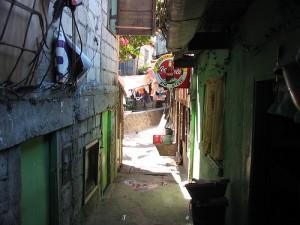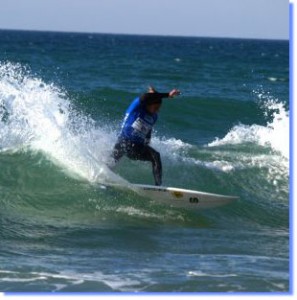“Manila, Manila/ I keep coming back to Manila” so goes the classic Hotdog song. The ’70s pop group didn’t bother specifying which parts of Manila they kept coming back to, but we are sure that they were probably thinking of the swanky parts of Escolta and Cubao, or perhaps of an idealized, romantic abstract idea of a Manila that never was. One thing is for sure, though, they didn’t mean these parts of Manila.
Old Balara Road
It’s been said that the Philippine Revolution was weaned in the wilderness of Diliman. I guess the people on Old Balara Road never got the memo to move the fuck on because the narrow street is still every bit as 1890s as can be.
Rutty roads, blind curves and residents throwing random rocks at passing cars make you feel how it was to be in the shit during the Revolutionary War, except this time, you’re Spanish and everyone hates you.
Old Balara Road is pretty impassable during rush hour, but people still try anyway, using the thirty to forty-minute crawl to do important things like making phone calls, listening to music and working up the anger to beat their kids senseless when they get home.
It gets worse at night, when it becomes the sort of dark alley you don’t want to walk down alone, or at all. Killer trucks barrel down on their way from Katipunan to Commonwealth ripping holes in the road that can swallow up small children and compact econo-cars. What little light on the road comes from one-room videoke bars that have the gall to have Guest Relations Officers whom customers are forced to sit with for lack of space.
España Boulevard
The Philippines has two basic seasons: summer and the monsoon. Similarly, España, that road where the University of Santo Tomas stands,has two states: dry, and impassable except by sea creatures.
Absurd as it may sound in this day and age, flooding is a way of life in that part of the Ever Loyal and Noble City of Manila.
We aren’t talking about ankle-deep water that children can play in, either.
The floodwaters in España have large enough waves for a Beach Boys reunion concert and have killed more than their share of cars.
The University of Santo Tomas is on España, and while the school has gone a long way since Jose Rizal railed against it in his Noli Me Tangere, one suspects that it flooded in the rainy season even then. Being rather short of stature, the flooding may even be the real reason why Rizal hated UST.
It would also explain why UST remains a traditional Catholic school. There’s nothing like raging torrents and a plague of rats to reinforce the fear of God in one’s heart.
Aurora Boulevard
Once a provincial road connecting Manila to the suburbs of Quezon City, Aurora Boulevard must have once been a scenic route with vistas of Amorsoloesque harvest scenes. That was in the ’50s, though, when Amorsolo scenes reflected reality, and were not just some tacky knock-offs to hang on your wall.
Now, one cannot pass through Aurora Boulevard without getting depressed. Choked with jeepneys, buses and with the sky blocked off by flyovers and MRT lines, Aurora Boulevard is where the Philippine dream came to die.
The road passes through Tony Perez’s Cubao, the fallen New Manila district, Sta. Mesa, across the University Belt, and to Malacañang, which is like a tropical Mordor. Aside from the Magnolia Ice Cream House, there is literally nothing along this road that will make you happy. Nothing. And it’s not even the Magnolia House anymore, it was bought by food conglomerate Nestle years ago and renamed the Ice Creamery or some such. Aw, Jesus Christ.
True, Gateway Mall is along Aurora, but Aurora is the asshole of Araneta Center, with surly guards and a single glass door to let the riff-raff in, which sort of ruins the analogy, but is certainly apt. Ukay-ukay thrift shops abound along this road, which is great for indie artsy types, until the realization hits that the real reason for shopping there is unhip poverty.
A drive down Aurora is an illustration of the Buenaventura Principle that argues that nobody can ride a jeepney at night without looking emo. And, really, if one has to commute through that slow-moving, smog-filled, strip club-lined road twice a day, the urge to slit one’s wrists becomes pretty strong. As a bonus, though, all clothes turn black from the smog, making emo fashion effortless.
Pasay City
Pasay City claims to have a population of 88,000, but nobody ever admits to living there. Sure, someone might hazard that he used to live there, maybe in the ’70s or something. But this is usually as a prelude to a success story.
Admittedly, Pasay is home to some pretty impressive and important institutions. The Senate of the Philippines and the Government Service Insurance System, for example. The departments of Foreign Affairs, Finance, the Bangko Sentral ng Pilipinas and the Cultural Center of the Philippines are also here. But then again, so are a lot of motels, titty bars, street walkers and pedophile tourists, so, I guess Pasay is like a tele-evangelist charged with rape, everything evens out.
The Ninoy Aquino International Airport is in Pasay, which is pretty much the only other reason anyone goes there. It says a lot for a city when people go there just so they can leave.





15 Comments